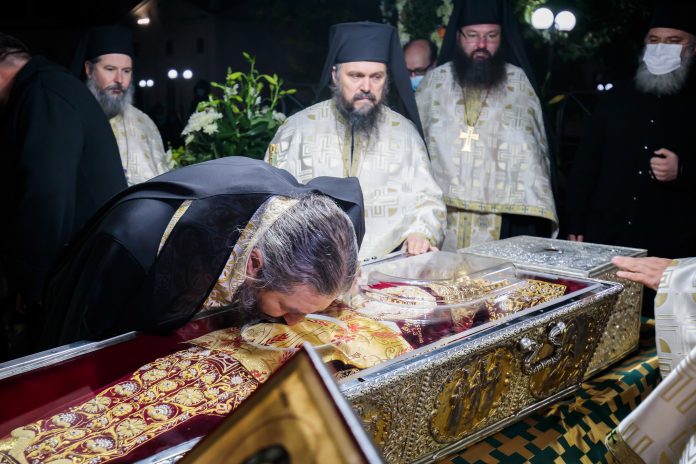Defying pandemic fears, more than 50,000 Romanian pilgrims have prayed at the shrine of a 10th century Orthodox saint, regarded as a symbol for the poor and needy.
Parascheva of the Balkans as she is known was buried in Iasi in the Metropolitan Cathedral in 1888.
A pilgrimage at her shrine in the cathedral is one of the major religious events in Romania.
Pre-pandemic, hundreds of thousands of pilgrims gathered in the northeast city in October to commemorate St. Parascheva. The city holds two days of celebration for her life.
Parascheva was born into a rich family near Constantinople in the 10th century. But she gave up her comfortable life and embarked on an ascetic, religious life. She is considered one of the most important female saints of the different Orthodox churches in the region.
Gendarme spokesman Col. Sorin Despina said some 52,000 had visited her shrine on Wednesday. No incidents have been reported, he said.
Authorities have taken measures to avoid crowding and pilgrims wear masks and are spaced apart, he said.
A service will be held outdoors later Thursday on the Stephen the Great boulevard in front of the cathedral.
Pilgrims will be able to watch the service on big screens placed along the boulevard.
“We appeal for calm and understanding,” he said. “We want to be in a permanent dialogue with pilgrims.”
The feast was first celebrated in the city in 1955 during the communist era.
Romanian Orthodox Church slams moves to make sex education compulsory in schools



















